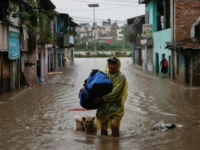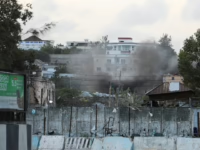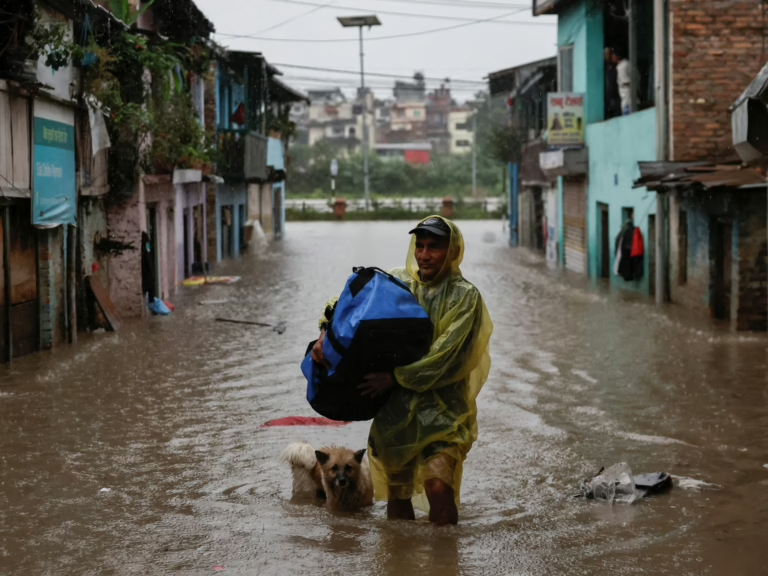Persistent heavy rainfall hampers rescue missions across the Himalayan region as officials grapple with escalating emergencies.
In Nepal, intense rains have triggered landslides and sudden floods, resulting in at least 47 fatalities, obstructed transportation routes, and destroyed several bridges.
According to Kalidas Dhauboji, spokesperson for the Armed Police Force, 35 individuals lost their lives in multiple landslides within the Ilam district, located in the eastern border area adjacent to India.
Recommended Stories
list of 4 itemsend of list
Additionally, nine people remain unaccounted for after being swept away by floodwaters, while three others succumbed to lightning strikes in various parts of Nepal, as relentless rains continue to batter the eastern and central Himalayan zones.
“Search and rescue operations for those missing are actively underway,” stated Shanti Mahat, a representative from Nepal’s National Disaster Risk Reduction and Management Authority.
In response to the ongoing crisis, the Ministry of Home Affairs has declared Monday and Tuesday as nationwide public holidays, excluding emergency responders and disaster relief personnel, to better manage the situation.
Government official Rameshwar Dangal explained that this rare decision was prompted by weather forecasts predicting sustained heavy rainfall.
Meteorological experts have issued red alerts for over a dozen districts, with Kamal Ram Joshi, head of the department, urging residents living near rivers and streams to evacuate without delay, as reported by The Kathmandu Post.
The warning encompasses densely populated areas, including sections of Kathmandu, with provinces such as Bagmati, Gandaki, Lumbini, and Madhesh expected to experience the most severe precipitation through Monday morning.
Transportation networks have been severely impacted, with landslides severing all primary access roads to Kathmandu.
The Araniko Highway, which links Kathmandu to the Chinese border, is impassable due to multiple road collapses, while the BP Highway, serving eastern regions, remains buried under landslide debris.
Domestic air travel was suspended on Saturday because of poor visibility, although international flights have continued with some interruptions.
“While domestic flights face significant disruptions, international services are largely operational,” reported Rinji Sherpa, spokesperson for Kathmandu airport.
The timing of this disaster exacerbates its effects, coinciding with the return of hundreds of thousands of people traveling back from their hometowns after Dashain, Nepal’s most significant religious festival. The main day of this two-week celebration, Thursday, typically sees mass movement as families reunite.
Of particular alarm is the Koshi River in southeastern Nepal, where water levels have surged to more than double the usual volume.
Local administrator Dharmendra Kumar Mishra confirmed that all 56 sluice gates of the Koshi Barrage have been opened-far exceeding the typical 10 to 12 gates-and authorities are contemplating restricting heavy vehicle traffic on the barrage’s bridge.
This river is notorious for causing severe flooding in Bihar, India, during the monsoon season.
Meanwhile, in the Darjeeling hills of West Bengal, India, heavy rains have led to landslides that claimed at least seven lives, according to local news sources.
“Seven bodies have been recovered from the debris so far. We are currently searching for two more individuals,” said Abhishek Roy, a police official from Darjeeling district, as reported by Reuters.
Each year, Nepal’s mountainous terrain faces numerous casualties from landslides and flash floods during the monsoon period, which typically spans from mid-June to mid-September.























